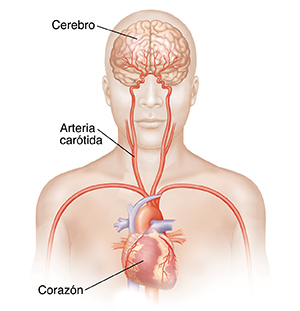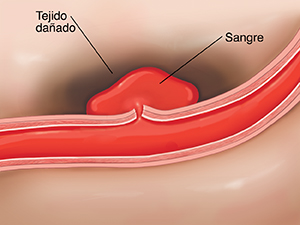El cerebro necesita un suministro constante de sangre para funcionar. Durante un accidente cerebrovascular, la sangre deja de circular a una parte del cerebro. El área afectada está dañada. Sus funciones se ven perjudicadas o pueden llegar a perderse. La mayoría de los accidentes cerebrovasculares se deben al bloqueo de un vaso sanguíneo que suministra sangre al cerebro (accidente cerebrovascular isquémico). También pueden ocurrir si un vaso sanguíneo del cerebro se rompe (se abre). Esto se conoce como accidente cerebrovascular hemorrágico.
Cómo se produce un accidente cerebrovascular hemorrágico
El accidente cerebrovascular hemorrágico ocurre cuando se rompe un vaso sanguíneo en el cerebro. Esto permite que la sangre se derrame o se acumule cerca del tejido cerebral. Esa sangre adicional ejerce presión sobre las células cerebrales y puede dañarlas o hasta destruirlas. Otras células cerebrales mueren a causa de la interrupción del suministro normal de sangre como resultado de la presión alta en el cerebro.



